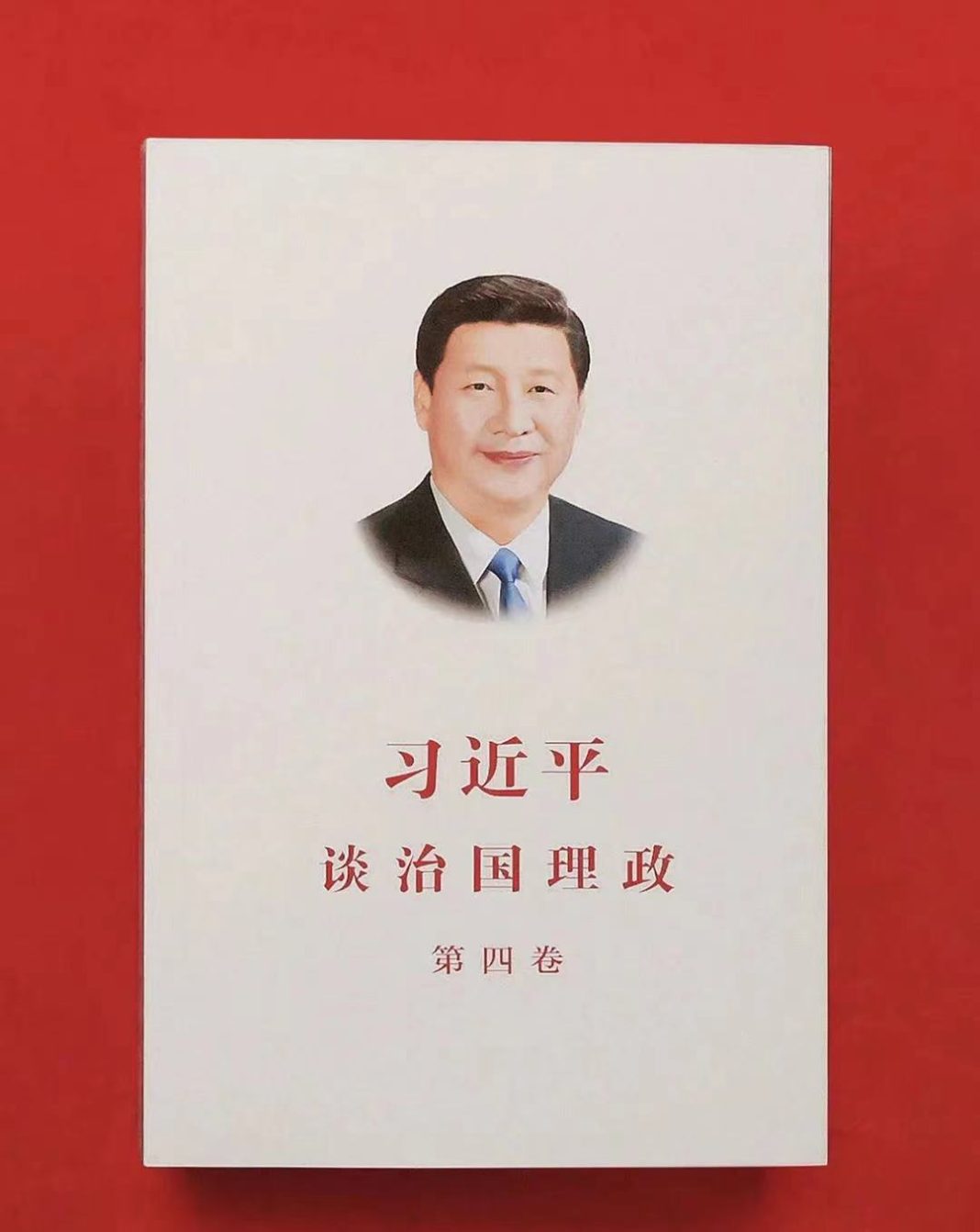By Makhdoom Babar

The fourth volume of Chinese President Xi Jinping’s Governance of China has hit the market. The inaugural volume, released in September 2014, primarily comprised significant speeches and written materials by President Xi, encompassing the time frame from November 2012, when he assumed the role of General Secretary of the Communist Party of China (CPC) Central Committee, through June 2014. It can be most aptly characterized as Xi’s comprehensive expression of his vision. As its title ‘Xi Jinping: China’s Third New Era’ suggests, the book covers the period mid-June 2017 till the end of 2020—a period when, Xi Jinping’s acolytes claim, China had already embarked on a third thirty-year era under his leadership, like those of Mao and Deng before him.
The book serves as a valuable tool for gaining insight into and dissecting the direction in which China was headed under Xi’s leadership. The smooth flow of ideas from one statement to the next, complemented by supplementary information, systematically unveils the blueprint for action. Volume 4, therefore, delineates a clear yet challenging agenda, leaving no uncertainty about Xi’s determination. An intriguing aspect of the book that captured significant attention is the concept of China’s noteworthy initiatives to establish a global community built on the principles of collective peace, development, and prosperity for all of humanity.
In the fourth volume, readers will find a meticulously crafted narrative that unfolds the evolving governance principles championed by Xi. This volume provides a comprehensive exploration of the step-by-step and evolutionary growth that characterizes Xi’s tenure. It offers an in-depth overview of the accomplishments, policies, and advancements achieved during President Xi’s continuous tenure.
Within these pages, you’ll discover a thorough examination of the successful policies that have been implemented and their real-world impacts. This volume delves into the progress achieved and the remarkable achievements that have been realized through the application of Xi’s ideology and strategic blueprint, offering readers a comprehensive understanding of the transformative journey China has undertaken under his leadership.
As Global Powers were engaged in hegemonic designs driven by their quest for dominance, China devised an initiative of transparent, open, inclusive growth and development for the global community with a shared future. The Chinese model is based on peaceful and harmonious development in an interconnected world.
What’s not widely recognized globally is that the China-Pakistan Economic Corridor (CPEC) actually preceded the Belt and Road Initiative. The memorandum of understanding for CPEC was inked in July 2013, predating the official launch of the Belt and Road Initiative. Consequently, CPEC rightly holds the distinction of being the pioneering project of this expansive initiative, which has now garnered the participation of more 150 countries of the world across Africa, Europe, Latin America, and Oceania. A steadfast and unwavering consensus has consistently prevailed in Pakistan regarding the enduring all-weather strategic cooperative partnership shared between Pakistan and China. This enduring partnership between the two nations has withstood the test of time, exemplifying a robust and exemplary model of good neighborly relations.
In the pursuit of his vision, Xi Jinping is not just advancing a domestic agenda but also sending a powerful message to the global community through this book. He underscores that China’s remarkable development and prosperity are firmly grounded in the bedrock of diligent effort, tenacity, and resilience. Xi fervently upholds his vision of the Chinese dream of national rejuvenation with an unwavering commitment and a clear sense of purpose, transforming it from an aspiration into a tangible reality.
The enduring partnership between Pakistan and China is not merely a diplomatic arrangement but a profound reflection of the trust and camaraderie that exists between these two nations. This relationship is anchored in shared values, common interests, and a commitment to regional stability and economic progress. It serves as a testament to the strength of their bonds and the mutual benefits that result from such a deep and enduring partnership.
As Xi Jinping steers China’s developmental course, he sends a resounding message to the International community. His emphasis on hard work, dedication, and unwavering resolve highlights the core principles upon which China’s impressive growth and prosperity are built. Xi’s resolute pursuit of the Chinese dream of national rejuvenation is not just a slogan but a concrete commitment to elevate the quality of life for the Chinese people and make a meaningful contribution to global peace and development. It’s a testament to the idea that success on a national scale is predicated on a strong work ethic, determination, and the ability to translate aspirations into reality.
Volume 4, like the previous three volumes, also serves as a great source for the international community to deepen their comprehension of Xi Jinping idealology and to learn about his approach in taking forward the epoch-making Belt and Road Initiative to build a community with a shared future for humanity.
Responding to the needs of globalization, an integrated economic model with emphasis on connectivity, digital economy, social uplift and shared prosperity with win-win outcomes is being pursued. China has established free trade zones in many provinces and regions, providing a level playing field to local and foreign investors alike, except in specific sectors of national importance clearly identified.
These series in general and especially the fourth volume offer readers a profound exploration, not only of political intricacies but also of a humane dimension within Xi’s governance model. It illuminates a development ideology that is not just a concept but a compassionate reality, one that genuinely considers the hopes and dreams of everyday individuals in its meticulous planning, both at micro and macro levels.
In the pages of this volume, readers will find valuable insights and lessons to be gleaned from Xi’s leadership. One such lesson, especially relevant to allies like Pakistan, is the imperative of prioritizing people-centric development. These books underscore the significance of aligning policy with the sentiments and aspirations of the general populace, offering a compelling example of how thoughtful governance can lead to transformative and inclusive development.






